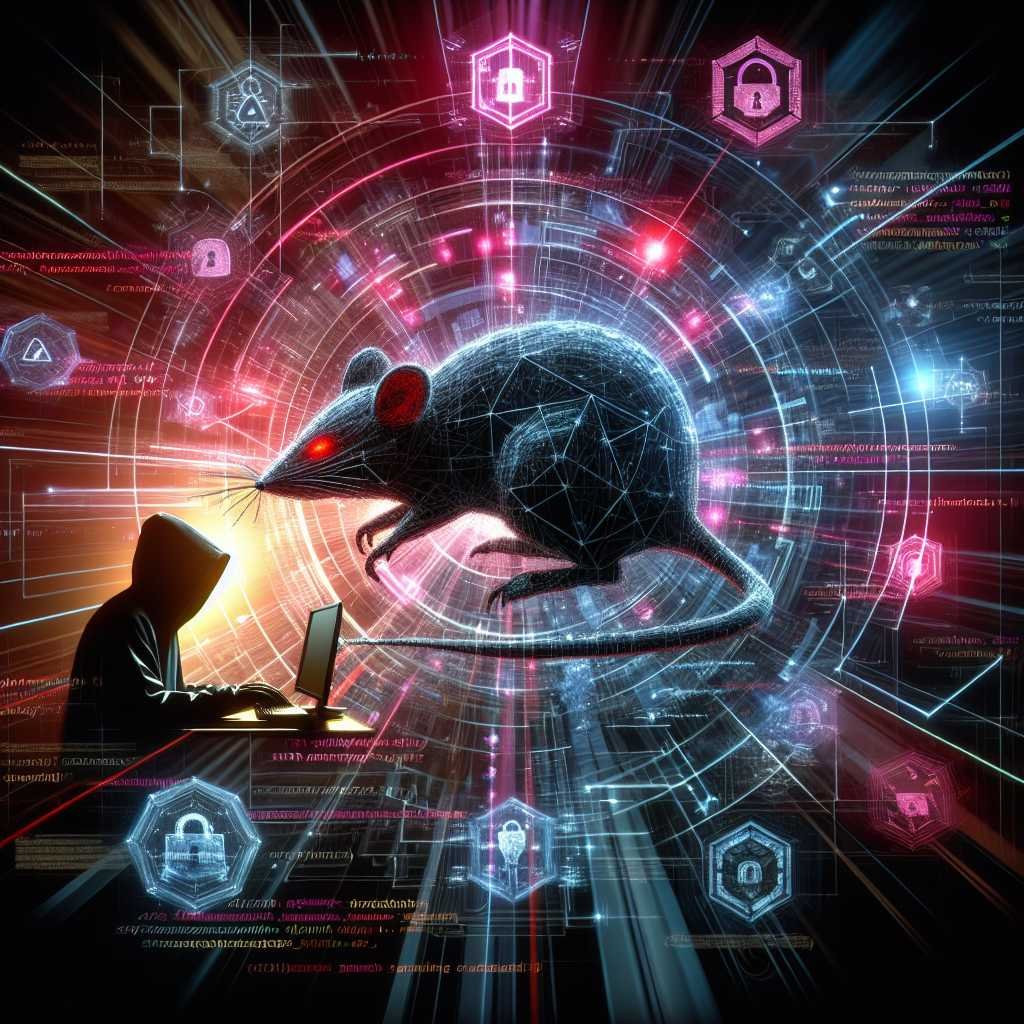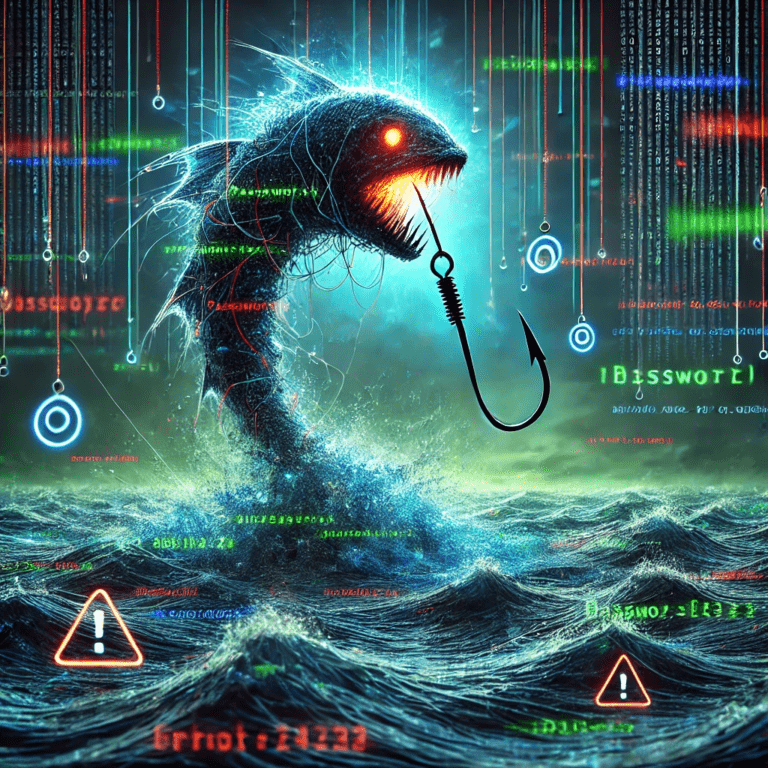Auto-Color RAT Exploits SAP NetWeaver: What Every Organization Must Know About This Advanced Cyberattack
Cyberattacks rarely make headlines unless they rattle critical infrastructure or unearth a new breed of malware. The latest attempt to weaponize SAP NetWeaver—a backbone for countless enterprise operations—does both. If your organization runs SAP or cares about keeping its digital fortress secure, keep reading. The rise of the Auto-Color RAT marks a pivotal shift in how threat actors are targeting enterprise systems, and the lessons from this attack could shape your entire cybersecurity strategy.
Let’s pull back the curtain on what happened, how the attack unfolded, and—most importantly—what you can do to guard your organization against similarly advanced threats.
The Anatomy of the Attack: SAP NetWeaver Meets Auto-Color RAT
In April 2025, a US-based chemicals company faced a cyberattack that combined a freshly disclosed, max-severity SAP NetWeaver vulnerability (CVE-2025-31324) with a stealthy Linux remote access trojan called Auto-Color. The story, detailed in a report from Darktrace, spotlights both the ingenuity of modern threat actors and the critical need for robust, adaptive defenses.
Here’s the quick summary:
- Attackers exploited a newly patched SAP NetWeaver flaw to stealthily upload a malicious payload onto an internet-facing server.
- The payload? Auto-Color RAT, a Linux backdoor that specializes in persistence and evasion.
- The attack was contained by Darktrace’s autonomous response technology before it could escalate—but not before revealing a worrying new threat pattern.
So, why does this matter, and what makes this attack so significant in the bigger picture of enterprise security?
Why SAP NetWeaver Is a High-Value Target for Attackers
SAP NetWeaver isn’t just another enterprise tool; it’s the beating heart of many global businesses—powering everything from HR to supply chains. This makes it a prime target for cybercriminals seeking deep access, data theft, or disruption.
Here’s why SAP systems are often in the crosshairs:
- Complexity breeds vulnerability: Large, interconnected systems are harder to patch and monitor.
- Valuable data and access: SAP often manages sensitive business processes and data.
- Siloed management: SAP teams and IT security sometimes operate separately, creating blind spots.
When vulnerabilities like CVE-2025-31324 surface, attackers move swiftly. In this case, the flaw allowed remote file uploads—essentially an open door for malware.
Breaking Down CVE-2025-31324: How the Exploit Works
CVE-2025-31324 is a critical vulnerability in the SAP NetWeaver application server. It received a CVSS score of 10.0—the highest possible severity. This should set off alarm bells.
The exploit in plain English: – Attackers use the flaw to upload files directly to the server. – With the right file (like a Linux ELF executable), they can run malicious code. – This opens the path to remote code execution—meaning attackers can do almost anything, from stealing data to taking over the server.
Let me put it another way: If SAP NetWeaver is your company’s digital vault, then CVE-2025-31324 was a window left unlocked. Auto-Color was the burglar ready to climb in.
For more technical details, check out the SAP Security Patch Day advisory.
Meet Auto-Color RAT: The Stealthy Linux Backdoor
Auto-Color isn’t just another piece of malware. First seen in 2024, it’s rapidly gained notoriety for targeting Linux systems with tactics designed to dodge detection and maintain persistence.
Key Characteristics of Auto-Color RAT
- Adaptive privilege targeting: If it lands with root access, it implants a malicious library (
libcext.so.2) deep within system directories. Without root, it still operates stealthily, minimizing its footprint. - Persistence mechanisms: Uses clever tricks like
ld.so.preloadand hooks into core system functions to survive reboots and avoid removal. - Unique per victim: Each instance renames itself (hence “Auto-Color”) and carries unique, encrypted configurations, making signature-based detection tough.
- C2 evasion: Communicates with command-and-control servers over TLS, blending in with legitimate traffic and stalling if it can’t reach its handlers—a built-in defense against sandbox analysis.
Why does this matter? Unlike run-of-the-mill malware, Auto-Color adapts, persists, and actively hides from both humans and machines. It’s a sophisticated foe designed for long-term, covert access.
Timeline of the Attack: From Exploit to Containment
Let’s walk through how the attack unfolded—because there are valuable lessons at every stage.
- Flaw disclosure and patch release: SAP releases a patch for CVE-2025-31324 in April 2025.
- Attackers move fast: Within days, threat actors exploit the unpatched SAP NetWeaver server at the chemicals company.
- Auto-Color delivered: An ELF payload is uploaded and executed, seeking to establish persistent access.
- Darktrace detects anomalies: Suspicious downloads, unusual DNS, and SSL connections to known malicious infrastructure trigger alerts.
- Autonomous response steps in: The infected device is restricted to its usual business functions, cutting off the attack’s lifeline.
- Malware stalls: Unable to reach its command server, Auto-Color goes dormant—demonstrating advanced anti-analysis features.
- Remediation window: The company is given a critical 24-hour window to investigate and remediate before containment is lifted.
Takeaway: The speed and sophistication of this attack are a wake-up call. Automated detection and response played a pivotal role—human analysts alone might have spotted the attack too late.
The Broader Threat: Why This SAP Exploit-Malware Pairing Matters
This wasn’t just another incident—it was the first documented case of Auto-Color RAT being delivered via a SAP NetWeaver vulnerability. The convergence is significant for a few reasons:
- Critical infrastructure is at risk: SAP powers essential services in energy, chemicals, healthcare, and beyond.
- Sophisticated tools are being weaponized: Threat actors are combining “zero-day” exploits with persistent, adaptive malware.
- Detection is harder than ever: Advanced RATs like Auto-Color evade traditional security tools, requiring more intelligent, layered defense strategies.
Frankie Sclafani, director of cybersecurity enablement at Deepwatch, put it starkly:
“The dangerous convergence of a critical SAP vulnerability with the elusive Auto-Color backdoor malware to target critical infrastructure signals a disturbing new chapter in cyber threats.”
Here’s why that matters: If you think “this won’t happen to us,” think again. Attackers are not just targeting big names—they’re probing any organization with exposed, unpatched systems.
How Organizations Should Respond: Defense Strategies That Work
Facing a foe like Auto-Color, where should you start? Here’s a roadmap—adapted from expert recommendations and real-world best practices.
1. Patch, Patch, Patch—And Then Patch Again
- Apply SAP Security Note 3594142 immediately if you haven’t already.
- If patching now isn’t possible, disable or restrict access to vulnerable components (see SAP Note 3596125 for step-by-step guidance).
- Inventory all SAP systems to ensure you aren’t missing hidden exposures.
2. Rethink Detection and Response
- Don’t rely on signatures alone: Modern malware is polymorphic and adaptive.
- Enhance anomaly detection—use AI and machine learning to spot unusual behavior, not just known threats.
- Deploy autonomous response technologies where possible, to cut off attacks in real time.
3. Harden SAP as Part of Your Core Security Program
- Break down silos—ensure SAP teams, IT, and security are collaborating, not operating in isolation.
- Integrate SAP logs and alerts into your SIEM or SOAR platform for holistic monitoring.
- Regularly test response playbooks with SAP-specific scenarios.
4. Network Segmentation and Zero Trust
- Limit which systems can communicate with your SAP servers.
- Apply Zero Trust principles: Don’t assume internal traffic is safe. Enforce strict authentication and least-privilege access.
5. Foster a Security Culture
- Train staff to recognize phishing and social engineering tactics—attackers often use these as a beachhead.
- Encourage cross-departmental collaboration and rapid information sharing—internally and with the broader security community.
6. Invest in Threat Intelligence and Information Sharing
- Stay updated on emerging threats via platforms like US-CERT and SAP’s security portal.
- Participate in industry ISACs (Information Sharing and Analysis Centers) to share and receive intelligence on new exploits and malware.
Common Pitfalls: What Organizations Get Wrong About SAP Security
Let’s be honest—SAP security is often an afterthought. Here’s where most organizations stumble:
- Assuming SAP is someone else’s problem: It’s “owned” by a dedicated team and not integrated with broader IT security.
- Delaying patches: Patching SAP can be complex, but delays create a dangerous window for exploitation.
- Underestimating Linux malware: Many assume Windows is the prime target, but advanced RATs like Auto-Color are laser-focused on Linux.
Don’t let these blind spots put your business at risk. This attack is the proof: SAP is in the crosshairs, and modern malware is designed to slip past old-school defenses.
Real-World Example: What Could Have Happened Without Autonomous Response?
Imagine Darktrace’s autonomous response hadn’t intervened. What’s the worst-case scenario?
- Auto-Color establishes persistent, covert access to the SAP server.
- Attackers move laterally, seeking sensitive data or privileged credentials.
- Business processes are disrupted, data is stolen, or ransomware is deployed.
- The breach goes undetected for weeks or months, amplifying the damage.
Here’s the lesson: Automation buys you precious time—enough for human analysts to investigate and act before it’s too late. In today’s threat landscape, that time is everything.
Proactive Steps for Security Teams: Your Action Checklist
If you’re a security leader, SAP admin, or IT pro, here’s a concise checklist to harden your defenses against threats like Auto-Color:
Immediate Actions:
– [ ] Apply SAP’s CVE-2025-31324 patch or follow mitigation guidance.
– [ ] Restrict internet-facing SAP servers and audit access controls.
– [ ] Hunt for indicators of compromise—odd ELF files, unusual network traffic, or renamed executables like /var/log/cross/auto-color/.
Near-Term Actions: – [ ] Integrate SAP logs into your SIEM and review for anomalies. – [ ] Test incident response plans with SAP-targeted attack scenarios. – [ ] Educate SAP and IT staff on signs of compromise and best practices.
Ongoing Actions: – [ ] Participate in security information sharing with peers. – [ ] Regularly review SAP’s security advisories. – [ ] Invest in AI-driven detection and autonomous response capabilities.
FAQ: People Also Ask
What is Auto-Color RAT and how does it work?
Auto-Color is a Linux remote access trojan (RAT) that establishes persistent, covert access to compromised systems. It adapts based on user privileges, uses encrypted communications, hooks system functions for persistence, and renames itself to evade detection.
How does CVE-2025-31324 affect SAP NetWeaver?
This vulnerability allows attackers to upload files to the SAP NetWeaver application server, potentially enabling remote code execution. If exploited, it can result in full system compromise.
How can organizations detect if they’ve been compromised by Auto-Color?
Look for unusual ELF executables, changes to system libraries (like libcext.so.2), abnormal network traffic to suspicious domains, and executables renamed to /var/log/cross/auto-color/.
Is SAP NetWeaver still safe to use after this incident?
Yes—if you apply the latest patches and follow recommended security practices. Regular maintenance and proactive monitoring are essential to staying secure.
Where can I find more information about SAP security updates?
Visit the SAP Security Notes portal for official advisories and updates.
The Takeaway: SAP Security Is Everyone’s Business
The Auto-Color incident is more than a one-off scare—it’s a call to action for any organization running SAP or other critical enterprise software. Attackers are getting faster, smarter, and more coordinated.
Your best defense?
– Rapid patching.
– Collaborative, cross-department security.
– Investment in advanced detection and response.
Don’t let SAP become your weakest link. Start bridging the gaps between your SAP, IT, and security teams today. And if you found this guide useful, consider subscribing for more deep dives into real-world security threats—because in cybersecurity, staying informed is half the battle.
Stay vigilant. Stay connected. Your organization’s future may depend on it.
Discover more at InnoVirtuoso.com
I would love some feedback on my writing so if you have any, please don’t hesitate to leave a comment around here or in any platforms that is convenient for you.
For more on tech and other topics, explore InnoVirtuoso.com anytime. Subscribe to my newsletter and join our growing community—we’ll create something magical together. I promise, it’ll never be boring!
Stay updated with the latest news—subscribe to our newsletter today!
Thank you all—wishing you an amazing day ahead!
Read more related Articles at InnoVirtuoso
- How to Completely Turn Off Google AI on Your Android Phone
- The Best AI Jokes of the Month: February Edition
- Introducing SpoofDPI: Bypassing Deep Packet Inspection
- Getting Started with shadps4: Your Guide to the PlayStation 4 Emulator
- Sophos Pricing in 2025: A Guide to Intercept X Endpoint Protection
- The Essential Requirements for Augmented Reality: A Comprehensive Guide
- Harvard: A Legacy of Achievements and a Path Towards the Future
- Unlocking the Secrets of Prompt Engineering: 5 Must-Read Books That Will Revolutionize You






